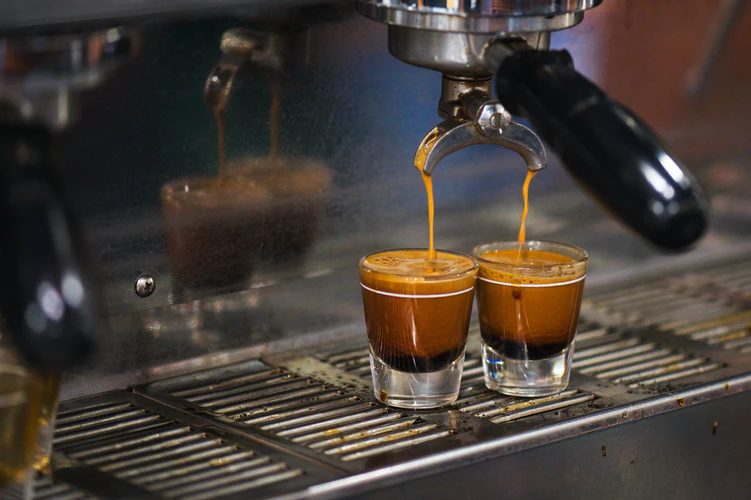How different is espresso from coffee? This is one question that coffee lovers are always asking. It is also essential to ask if it is the beans, the grind, or the brewing method that sets them apart?
Espresso refers to both the brewing method and the concentrated final shot. Any kind of coffee bean, irrespective of its origin and the level of its roasting, can make espresso.
You can mix espresso with milk to derive other espresso-based drinks such as cappuccino, flat white, macchiato, latte, marocchino, cortado, and americano.
Below is an exciting and easy-to-use guide for your homemade espresso.
1. Switch On and Preheat Your Espresso Machine
Get your entire espresso maker warming up early. This will take approximately 25 minutes on the higher side. Some machines will take less than that.
You can speed up this preheating. Pull a blank shot. Ensure you omit the espresso from the portafilter before you start.
2. Measure and Grind Your Beans
Before you take any measurement, it is essential to note your machine’s portafilter has a unique permitted range. The manufacturer recommends this capacity for optimum results.
Then, set your grinder to the size of your choice, as you like it. Place the portafilter on your scale and tare out the scale. Take 20 grams of your ground coffee and fill the portafilter. Write down this quantity in your notebook. You will need it in the dialing-in phase.
Some advanced espresso machines have an in-built grinder. As explained at Daily Espresso, acquiring a suitable machine to grind your coffee is the first step to a tasty mug of coffee. When using an advanced device, you grind your coffee into its portafilter. Then use your hand to level the mountain of ground coffee in the portafilter.
3. Apply Pressure Using Your Tamper
For you to tamp effectively, you need your grounds to be roughly level. Then press down straight using a tamper so that you have an actual puck. Continue tamping until your coffee grounds stop settling.
Tamping is an art that you will perfect with time and with practice. In your notebook, write down the number of tamps you have used at approximately 50% strength till you stop.
4. Pull Your First Shot
Flush some water through the group head for 2 seconds before you insert the portafilter. Pull the shot and time how long it takes you to produce 30g of liquid. Your product should be a rich, dark and sweet liquid. That’s the espresso. This, however, is the baseline.
5. Dial-In the Shot
Take note of the pressure the baseline has achieved so that you can know whether to adjust downwards or upwards in the next shot. Your machine should indicate the quality of your shot. It could be well or poorly extracted.
Dialing in becomes easier if you have a scale. Weigh your input (20g) and output (approximately 30g) so that you can achieve an excellent shot faster. Using the liquid volume may misguide you since the liquid (crema) will vary with different types of roasts. It is also dependent on the freshness of the beans you have used.
Experiment with pulling your shots until you get your perfect recipe. You may find that your best shot is outside the range of the recommended industry standard.
How the Espresso Brewing Works

Espresso is a coffee brewing procedure that uses high water pressure and finely ground beans to produce a small quantity of a concentrated shot. Apart from its focused flavor, the concentrate is in two parts. That is the thick syrup and a top layer foam (called crema).
The most critical elements you need to perfect with time in espresso preparation are:
- How to grind your beans into excellent grind (more refined than table salt but coarser than flour)
- Dose (the recommended dose is between 18-20 grams)
- Leveling
- Distribution
- Tamping
The primary purpose for you leveling and distributing is to balance the coffee bed. This will ensure the water you pour on the bed does not flow out quicker in one area. When water flows, that is, channeling may result in an under-extracted shot.
The delicate part is when you are tamping. Apply moderate pressure, and maintain consistency. Make sure your tamp does not lean on any side but remains level. So that water does not find weak spots and flow into them.
After successfully pulling your perfect shot and you have your espresso. You may add milk or take it as it is. Clean and dry your equipment, and that’s it.
As you have seen, brewing espresso at home is simple. You only need practice to master the correct output at each stage. Don’t be discouraged by your first attempt. Keep trying.






